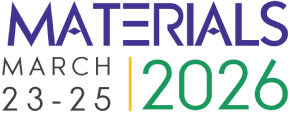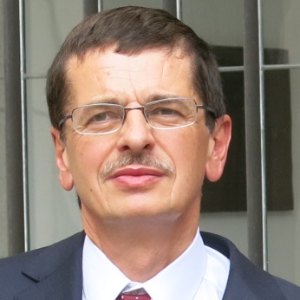Title : Phase transitions in metastable Ti15Mo alloy
Abstract:
Metastable beta titanium alloys are perspective candidates for the use in the aircraft industry and medicine due to their excellent strength, relatively low modulus of elasticity and enhanced biocompatibility. Thermomechanical treatments are often used to improve mechanical properties of these alloys due to the precipitation of different phases, namely the α- and ω-phase. It is also well-known that the α-phase precipitation is heterogeneous and preferentially occurs at lattice defects. Thus, a high density of grain boundaries and dislocations is needed for a homogeneous nucleation of the α-phase.
A Ti15Mo, which is a representative of a simple binary metastable beta Ti alloy, in a beta solution treated condition was subjected to severe plastic deformation (SPD). Two most popular techniques of SPD – equal channel angular pressing (ECAP) and high pressure torsion (HPT) were employed to introduce a high density of lattice defects to the material. The material was subsequently subjected to several types of thermal treatments in order to examine the phase transformations occurring in the deformed material upon heating.
In order to optimize the parameters of the thermomechanical treatment of the alloy and to achieve a material with required mechanical properties, the effects of the grain boundaries, dislocations, induced strain, ω-phase and local chemical inhomogeneities on phase transformations were examined in-situ by electrical resistivity and synchrotron X-ray diffraction and complemented by post mortem detail investigation of the microstructure and lattice defects in characteristic conditions by scanning and transmission electron microscopy including advanced techniques of transmission Kikuchi diffraction and automated crystallographic orientation mapping, positron annihilation spectroscopy, and X-ray diffraction.
Lattice defects introduced by SPD significantly influence both the phase transformations and the morphology of the α-phase. Lattice defects, in particular dislocations and grain boundaries, act as preferential nucleation sites for α precipitation and form fast diffusion paths for solutes which results in enhancement of phase transformations in the severely deformed material. On the other hand, mechanical properties of heat treated samples are mainly influenced by of the hard and brittle ω-phase and this influence is superior to that of the strain imposed SPD.
Audience Take Away Notes:
- The employment of synchrotron XRD for investigation of phase transitions in metastable alloys
- Efficient data processing from in-situ acquisition of sXRD for the determination of phase composition
- Complex microstructure investigation by different techniques
- The design of big joint implants with tailored properties



